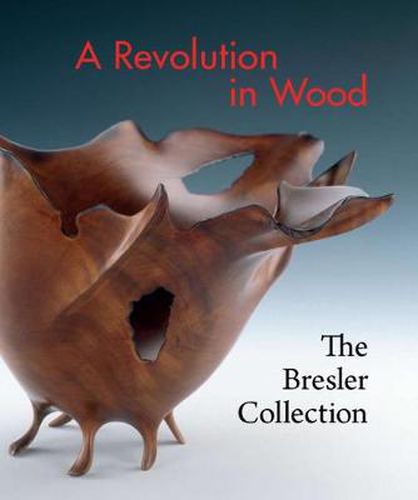Readings Newsletter
Become a Readings Member to make your shopping experience even easier.
Sign in or sign up for free!
You’re not far away from qualifying for FREE standard shipping within Australia
You’ve qualified for FREE standard shipping within Australia
The cart is loading…






A Revolution in Wood celebrates the magnificent gift of sixty-six pieces of turned and carved wood to the Renwick Gallery of the Smithsonian American Art Museum by the distinguished collectors Fleur and Charles Bresler. Illustrated in lavish detail, works by this country’s best-known wood artists highlight the growing sophistication of American craft’s youngest medium and the expressive capacity of its most organic material.
Masterpieces by the field’s pioneers, including David Ellsworth, William Hunter, Mark and Melvin Lindquist, Edward Moulthrop and Rude Osolnik, demonstrate the extraordinary range of expression achievable on the lathe, the medium’s foundational tool. Compelling recent works by Ron Fleming, Michelle Holzapfel, Hugh McKay, Norm Sartorius, Mark Sfirri and many others reveal the advent of new techniques, including multi-axis turning, the incorporation of secondary materials and a strong focus on carving.
A wide-ranging essay by Renwick Curator Nicholas R. Bell examines contemporary wood art’s historical roots and its rapid growth since the 1970s. Particular attention is given to the medium’s development outside the studio craft movement and how that dynamic has shaped the current field.
An interview with Fleur Bresler by former Renwick Curator-in-Charge Kenneth R. Trapp offers a window on the collector’s passion and highlights her twenty-five-year dedication to wood and to the artists she considers family.
The final section, Wood Art at the Renwick Gallery, illustrates in colour over two hundred works by more than one hundred artists, making this premier public collection available in print for the first time. From James Prestini’s original gift of twenty pieces before the Renwick’s opening to experimental works by current artists, this guide to the Smithsonian’s collection will serve as a reference for years to come.
$9.00 standard shipping within Australia
FREE standard shipping within Australia for orders over $100.00
Express & International shipping calculated at checkout
A Revolution in Wood celebrates the magnificent gift of sixty-six pieces of turned and carved wood to the Renwick Gallery of the Smithsonian American Art Museum by the distinguished collectors Fleur and Charles Bresler. Illustrated in lavish detail, works by this country’s best-known wood artists highlight the growing sophistication of American craft’s youngest medium and the expressive capacity of its most organic material.
Masterpieces by the field’s pioneers, including David Ellsworth, William Hunter, Mark and Melvin Lindquist, Edward Moulthrop and Rude Osolnik, demonstrate the extraordinary range of expression achievable on the lathe, the medium’s foundational tool. Compelling recent works by Ron Fleming, Michelle Holzapfel, Hugh McKay, Norm Sartorius, Mark Sfirri and many others reveal the advent of new techniques, including multi-axis turning, the incorporation of secondary materials and a strong focus on carving.
A wide-ranging essay by Renwick Curator Nicholas R. Bell examines contemporary wood art’s historical roots and its rapid growth since the 1970s. Particular attention is given to the medium’s development outside the studio craft movement and how that dynamic has shaped the current field.
An interview with Fleur Bresler by former Renwick Curator-in-Charge Kenneth R. Trapp offers a window on the collector’s passion and highlights her twenty-five-year dedication to wood and to the artists she considers family.
The final section, Wood Art at the Renwick Gallery, illustrates in colour over two hundred works by more than one hundred artists, making this premier public collection available in print for the first time. From James Prestini’s original gift of twenty pieces before the Renwick’s opening to experimental works by current artists, this guide to the Smithsonian’s collection will serve as a reference for years to come.